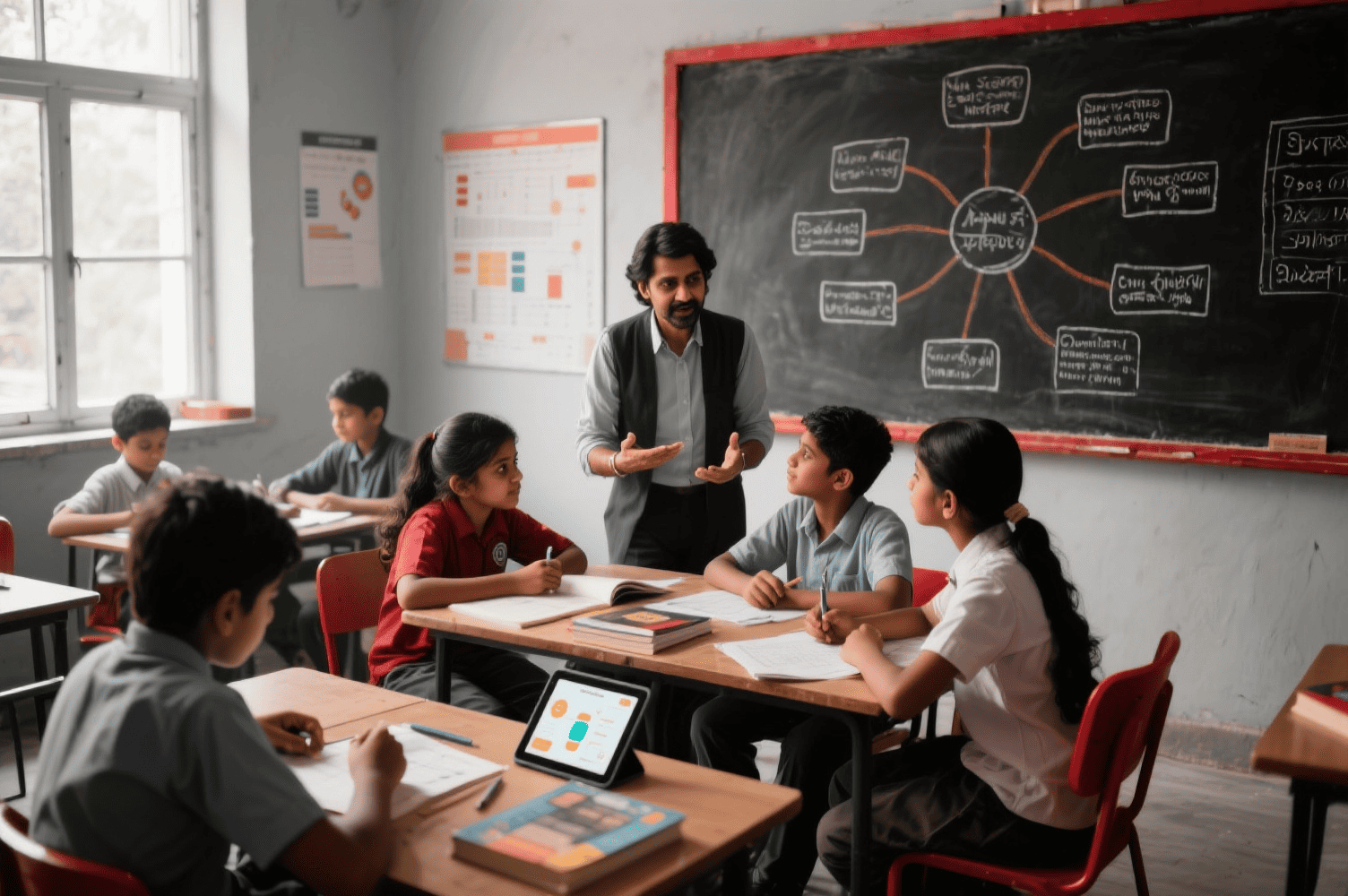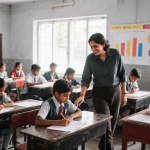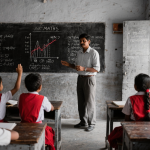- December 12, 2023
- by Educational Initiatives
- Blog
- 0 Comments
In continuation to 7th September 2020 blog: Board Exams, Rote Learning and the Learning Crisis- Understanding the problem In-depth. The article throws light on the cause and solutions to the problems discussed in the previous article.
The article appeared in the June 2018 edition of India Seminar.
http://www.india-seminar.com/2018/706/706_sridhar_rajagopalan.htm
There are serious problems at every stage of the Board Exam and all contribute to the learning crisis:
- The very validity of questions in the Board Exams:
The NCF 2005 included position papers on many different topics. Here is an excerpt from the paper on examination reforms[1] 2004-05:
The core of the exam system is the exam paper. This may seem almost a tautological assertion but, given the lack of attention paid by most boards to the quality of the actual exam paper, it is necessary to make it. The question papers remain seriously problematic.
Question paper sets from the most recent (March 2004) 10th and 12th grade exams were collected for detailed study. Attention was focused on paper sets from five boards popularly perceived to be the best in the country. The exercise was an eye-opener:
- What is the weight of the pituitary gland? (non-essential, the gland should be studied for its crucial function, perhaps even for its structure, but hardly its weight! )
- Who were the parents of Benito Mussolini? (irrelevant)
- How many members are there in the U.N.O.? (transient)
- Who was called Modern Messiah? (The term was employed by the textbook writer to describe Karl Marx but has no wide currency outside the textbook.)
- Describe the method of irrigation prevalent in India (takes as a given fact that there is only one such method in India, perhaps because the textbook has mentioned only one!)
- Our highest import is from (Hong Kong, Italy, Kuwait) (no correct answer provided—at least for any year in the last quarter century.)
Unfortunately, those criticisms of 2005 are equally valid today.
The problem of poor and invalid questions does not plague the board exams alone. As part of an NCTE committee examining the reasons for only 1% of candidates passing the Central Teacher Eligibility Test (CTET), I had the opportunity to analyse questions from the November 2012 CTET test along with the performance data. Note that CTET is set by the CBSE (and is considered a much better test than the state TETs). Here are two questions from the paper:
 |
 |
The basis of the data for the first question (apart from how comparative warmth is measured) is unclear. In the second question, the correct answer was marked as (1) and experts commented that most of the other options seem better ones. Let me add that I have not cherry picked questions, a majority of questions had issues with validity or ambiguity or level of difficulty.
Somehow this issue of quality and appropriateness of questions in exams has never got much attention, nationally or internationally. Internationally, this is not seen as a big problem in the developed world and researchers there probably assume that questions would be fine. However, recently a working paper by Dr. Newman Burdett compared Board Exam papers from India, Pakistan, Uganda, Nigeria and a Canadian province, Alberta and found that the extent of rote questioning in India and Pakistan was even higher than the African countries: “In India and Pakistan, higher-order skills were almost entirely lacking and the focus was very much on recall of very specific rote-learnt knowledge… In the two African countries, this rote-learning approach seemed less extreme” [2]
B. The process to set and check the papers and keep them error-free: The process of making papers has remained a largely manual process where question makers submit papers in sealed covers and a paper is chosen at random for the actual test. These days, it is possible to use software to have questions solved and checked independently so that errors and even ambiguities can be all but eliminated.
C. The way Board Exams are scored. The graphs below from the work of Prashant Bhattarcharji[3] show how the marks of ISC (left) and CBSE (right) students in the Maths Class 12 exam in 2013 are distributed. This is data for every student who took the tests
 |
 |
There are two points to note – each of which represents a serious problem if not a scam.
- These are not normal curves, which is very odd and would need explanation. Notably all spikes at marks like 36, 43 and around 96 in CBSE and 88, 95 and other scores in ISC are inexplicable and unfair.
- Both graphs show gaps meaning no student scored those marks. This is not possible under normal conditions and suggests grace marks, also unfair to other students.
Why is this happening? It is routinely said ‘Never attribute to malice that which is adequately explained by stupidity’. We see this more as a lack of capacity in the boards rather than a desire to manipulate. Yet, this is extremely unfair for a high stakes school leaving exam. It must be noted that nothing much changed based on these revelations in 2014; the author detected the same irregularities the next year.
There is also the issue of comparability of board marks. One can understand that marks of two different Boards are not comparable. But for many years, even marks across CBSE zones were not comparable (students score higher in the Chennai region of CBSE compared to the Delhi region). These are apparently done to allow the students to compete with the local state boards but are unfair for students who may seek admission in a different region.
Earlier, we have discussed in some depth why we feel there is a learning crisis, its original causes and why it persists in spite of efforts and resources. We have also discussed the key role of rote learning and many board exam related problems. In this section, we shall discuss some solutions.
The first principle that we should remember is that deep problems usually do not have quick fixes. All the solutions proposed will take at least three to five years to have an impact. These solutions focus on fundamentally addressing key issues like Rote Learning and low capacity in the system.
Focus on foundational learning: For any student, learning is like constructing a building – there is a foundation and then there are stages with each serving as the base for the next. The foundation for all learning is that by the age of 8 or 9, children must be able to read fluently, do arithmetic operations and develop basic critical thinking skills. The age deadline (corresponding to class 3 or 4) is critical. Either by law or through a campaign (like Swachch Bharat), this should be set as the common goal to be achieved by states and all types of schools in the next 5 years (with intermediate goals). A number of enablers in the form of resources for teachers, books and apps for students and information for parents and society are needed to make this happen. This will include research and assessments. But this will be the first (and most important) step in the battle to defuse the learning crisis.
Build systemic and institutional capacity: Capacity building is often used to refer to training of teachers and educational personnel. However, this ‘people capacity building’ has to be preceded by ‘institutional capacity building’. This essentially means that key educational institutions – research institutions like NCERT, teacher training institutions like colleges of education and DIETs, assessment institutions like the boards and others like the NCTE – must be strong and should continuously strengthen their expertise in their core functional area. They should evoke respect from the academic as well as the practitioner community. The steps for this are appropriate leadership and hiring, research as a key role and providing autonomy to institutions. Do we, for instance, see NCERT in the same light as an IIT or IIM? Is that not possible to imagine and make happen?
Systemic capacity is the ‘body of knowledge’ that gets created and advances a sector. For example, how does one get children in very low-income families to become effective readers? How does one create high quality computer-based assessments in the Indian context? While some of this knowledge can and should draw upon what is already known internationally, there will be a lot of knowledge that will have to be created (and hopefully contributed to the international community). If Google can develop techniques of working with low bandwidth connections and offline maps in India (and then spread that to the rest of the world), can we not discover educational approaches that work in our conditions and use that to advance the field internationally?
Build a new Science of Learning: The Science of Learning is a new interdisciplinary science which draws upon school subjects like mathematics, science and language as well as pedagogy, psychology, cognitive sciences, neuroscience, AI and related fields to answer the question, ‘How can human beings, especially children, learn better?’ Just like medical science studies disease, symptoms, diagnostic techniques and treatments and builds on data to provide answers that doctors can use to treat patients, the Science of Learning uses data on learning, techniques for learning and teaching insights to provide insights to teachers on a regular basis. It allows teachers to use the art of teaching they practice and draw upon the Science of Learning whenever they need, to lead to improved student learning. Some Science of Learning researchers may study ways to improve reading skills in children, while others may research issues with Algebra learning in children, while still others may focus on effectiveness of AI-based apps for students.
There is no doubt that we are in the midst of a learning crisis today. But we also have rich human resources that we can focus to not just solve this crisis for ourselves, but come up with techniques and solutions by strategically focussing on this area. Every country needs these solutions and there are, as yet, no ready answers. Can we convert this problem into an opportunity?
[1] http://www.ncert.nic.in/html/pdf/schoolcurriculum/position_papers/examination_reforms.pdf
[2] https://www.riseprogramme.org/sites/www.riseprogramme.org/files/publications/RISE_WP-018_Burdett.pdf
[3] http://www.thelearningpoint.net/home/examination-results-2013/exposing-cbse-and-icse



